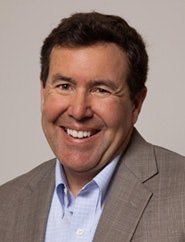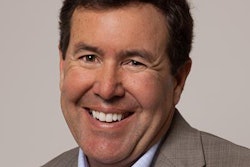
During a period of time when dental group practices are under increased pressure because of the high-profile actions of particular organizations, the Dental Group Practice Association (DGPA) is implementing a new ethical code that works to ensure practitioners put their patient's healthcare first, not what is best for the business of the practice.
In the second of an ongoing series of interviews with DrBicuspid.com, new DGPA Executive Director Quinn Dufurrena, DDS, JD, talked about the association's role in promoting and evolving best practices in all aspects of a practice and the advantages of a group practice when it comes to technology, infrastructure, and providing excellent, convenient patient care.
 Quinn Dufurrena, DDS, JD.
Quinn Dufurrena, DDS, JD.With some dental groups in the news lately for the wrong reasons, it is important for the DGPA to promote ethics among its members, according to Dufurrena.
"We [the DGPA] have an ethics policy in our bylaws," he said. "We have a standard of conduct for all our member companies. It includes the statement that any DGPA member company can never interfere with a dentist's clinical decision-making and treatment service. Nor can our members ever set quotas."
"As a dentist, I recognize that I am accountable individually as the professional," he said. "It is my legal, ethical, and moral obligation to place my patient's interests ahead of the business' interests."
But it doesn't end there.
Organizations have an ethical responsibility to create an environment that is conducive to good ethical behavior and also discourage unethical behavior, Dufurrena noted.
If a practitioner does have concerns that the business is being put ahead of patient care, the practitioner can go to the practice's DGPA ethics officer (DEO), which each member company designates, he said.
"The DEO facilitates compliance with this ethics code and responds to inquiries from the DGPA's Ethics Committee," he explained.
director, DGPA
Dufurrena indicated that the Ethics Committee reviews and investigates any complaints. These issues must be resolved by the company, or the company faces suspension or expulsion from the DGPA. This is a priority area for him, as well as the continued development of DGPA's ethics compliance program.
"We're creating a different set of standards around ethical behavior," he noted.
One advantage in the dental group practice setup is the ability to use peer pressure, data, and analytics to help aid and improve ethics, business practices, and patient care, according to Dufurrena.
"If I am in a large group practice supported by a DSO [dental service organization], I have my peers right there," he said. "I want the reputation of providing great quality of care for the patients; other dentists can evaluate that. There's a certain peer pressure to have good quality."
One of the evolutions in dental practice is the ability to use data to help improve patient care. Dufurrena gave the example of a practice that might have a number of older patients.
"We know, statistically, that older patients may be more likely to have periodontal disease," he said. "So we can use data and practice analytics to compare the rates of periodontal disease a practice is finding in its patients with the expected rates. If my rates as a practitioner are perhaps lower than expected, I can look at why that is. Overall, this will create better outcomes and better-quality treatment for our patients."
Dufurrena noted that he also looks forward to technology that will empower patients. He cited smartphone apps that will allow patients to take pictures of teeth and consult with dental practices, both before and after treatment.
"This technology that is coming in now can empower consumers and encourage them to pay more attention to their oral health," he said. "All of a sudden, consumers can communicate with their dental practice before and after treatment."
Dufurrena gave the example of a patient taking a picture of a crown. Maybe the patient notices the new crown doesn't match the other teeth, or the patient sees an open margin.
"Patients want high-quality, cost-effective care," he said. "DSOs have created systems, protocols, and a sophisticated infrastructure to better utilize technology -- such as paperless systems, CAD/CAM, and digital radiography -- and to improve patient care."



















